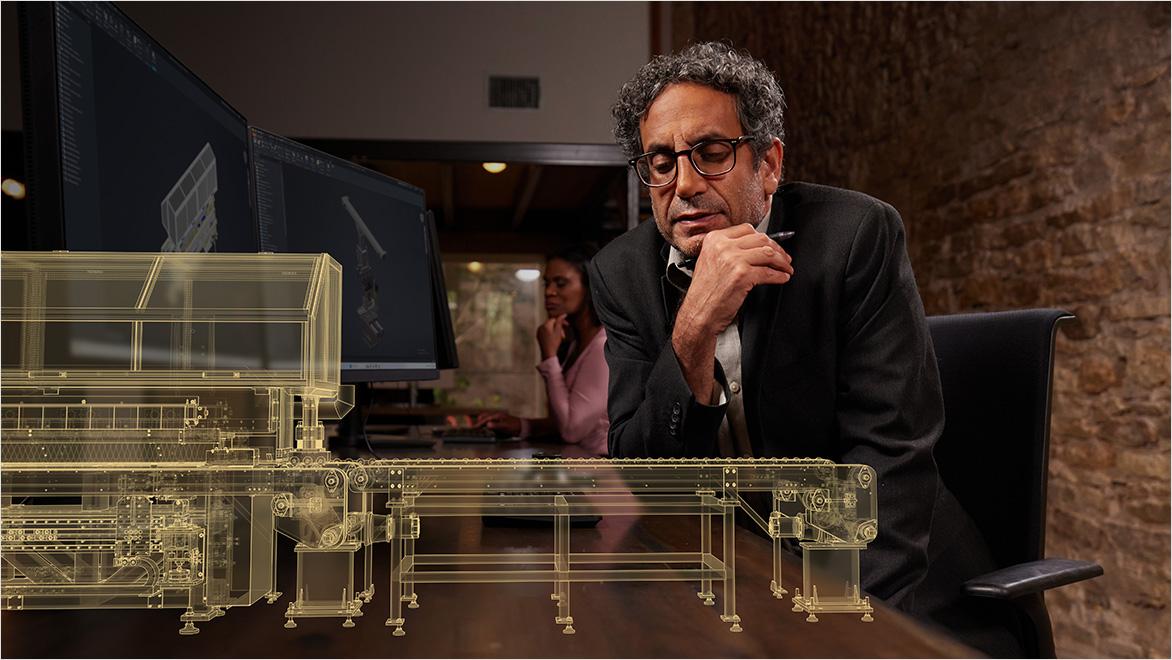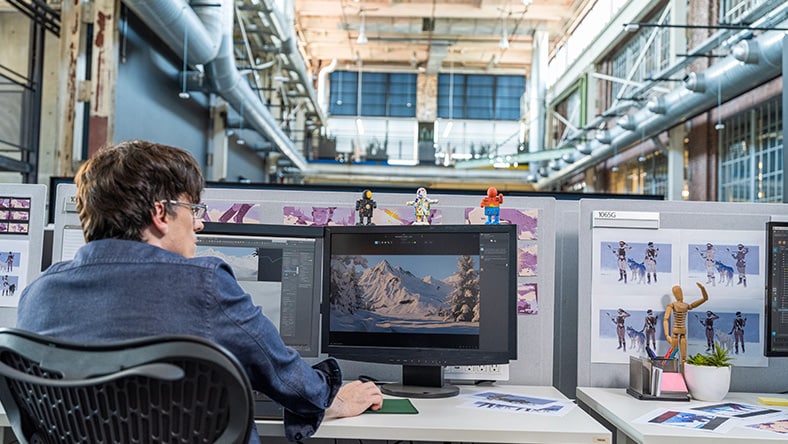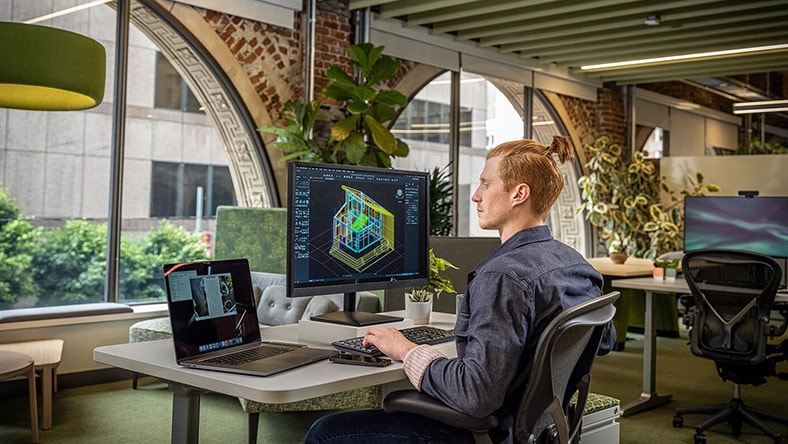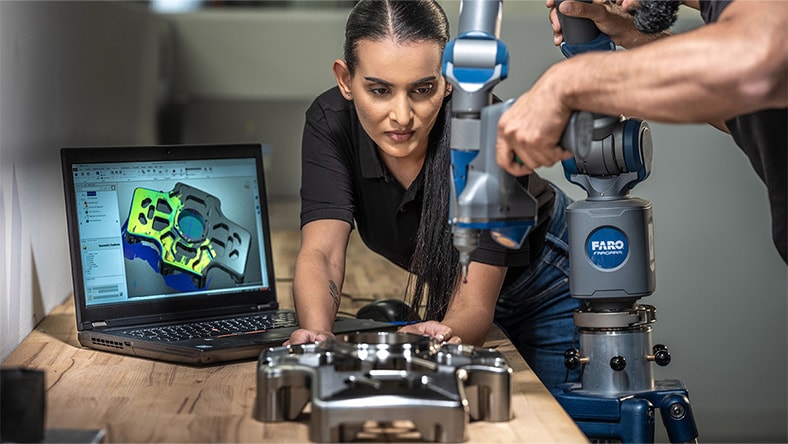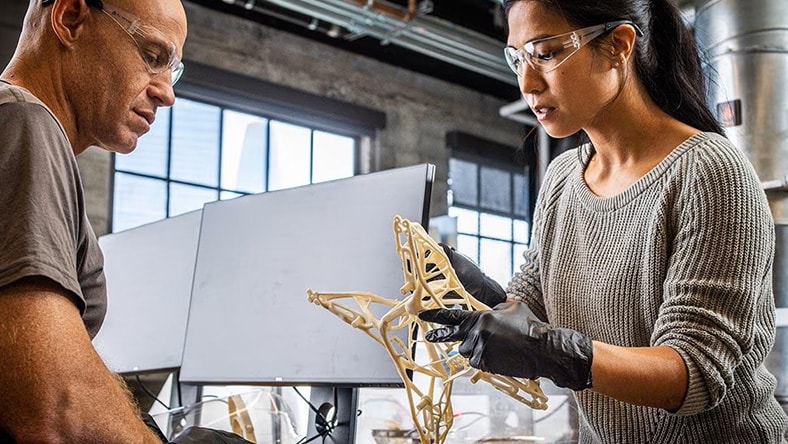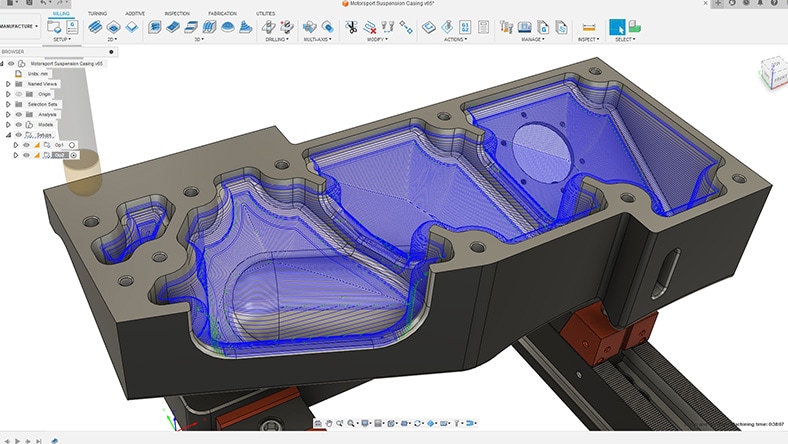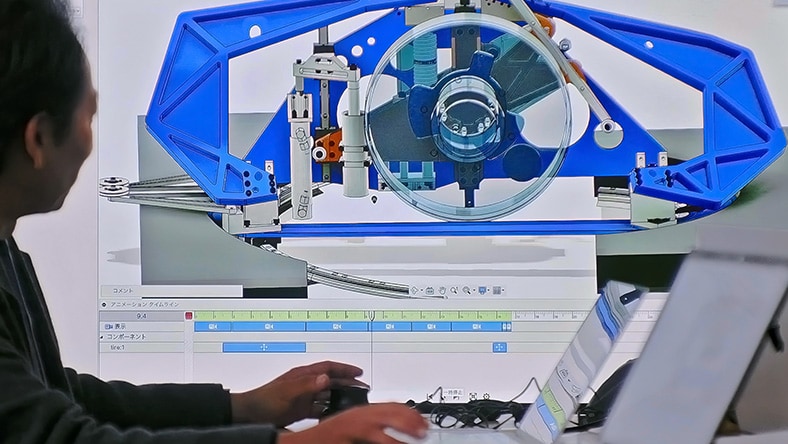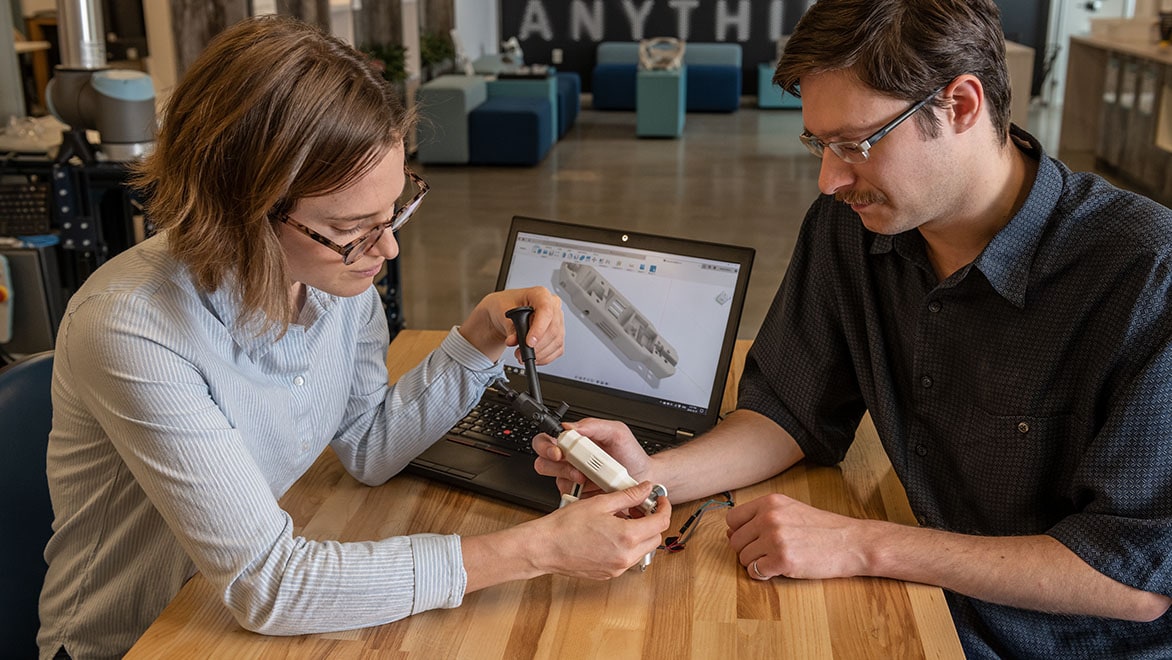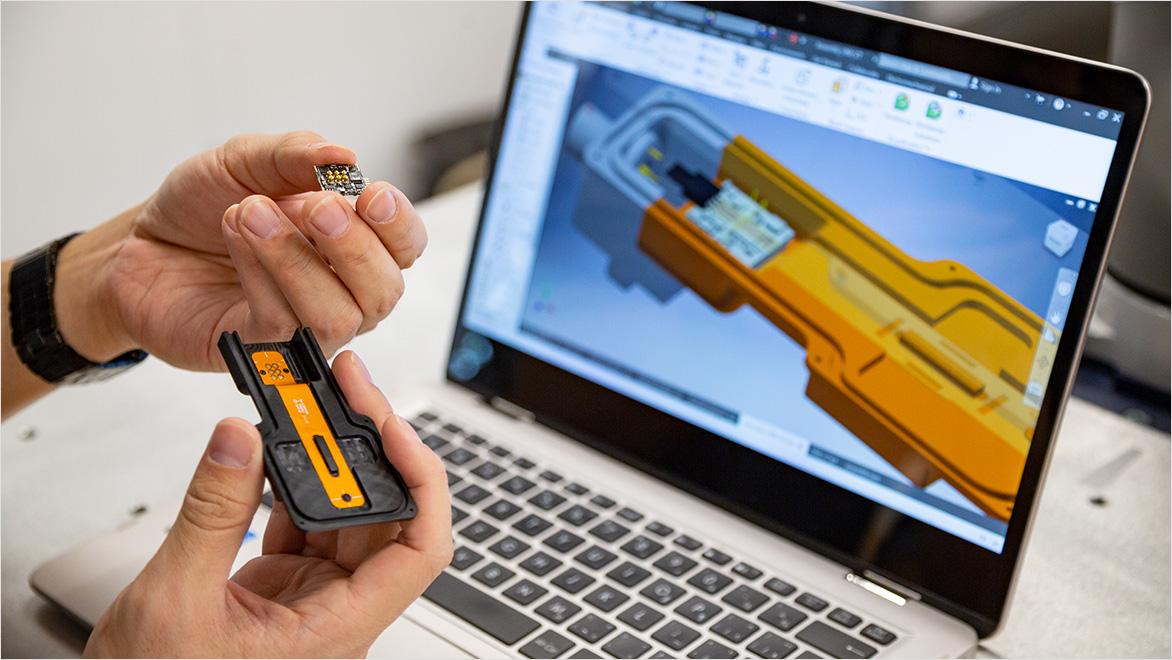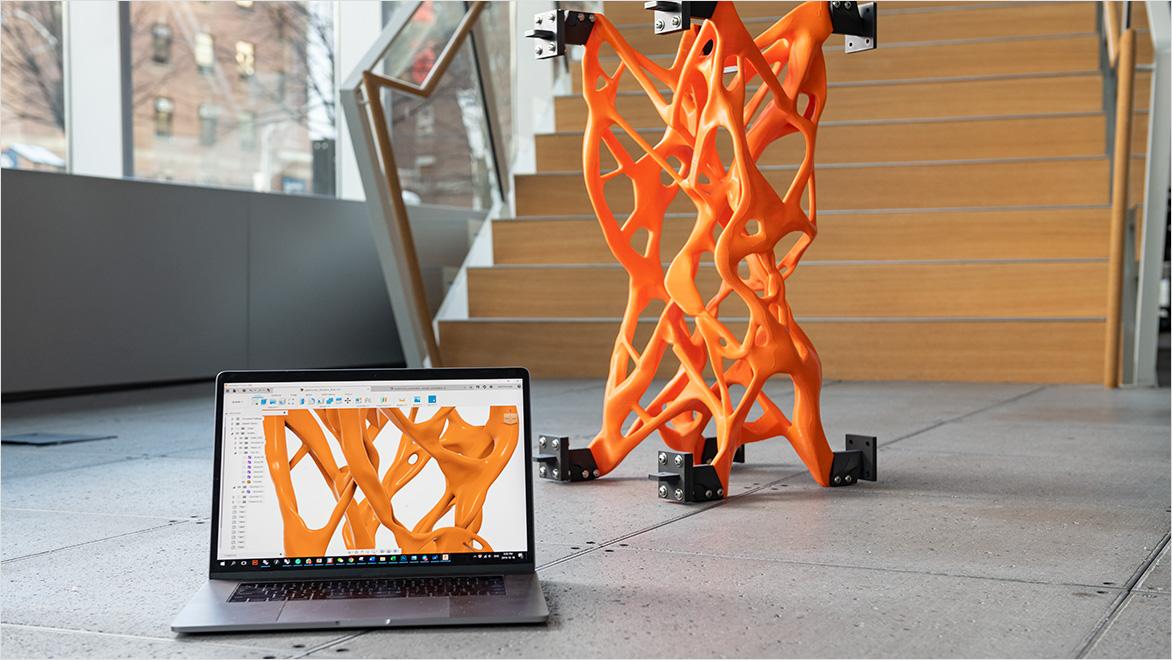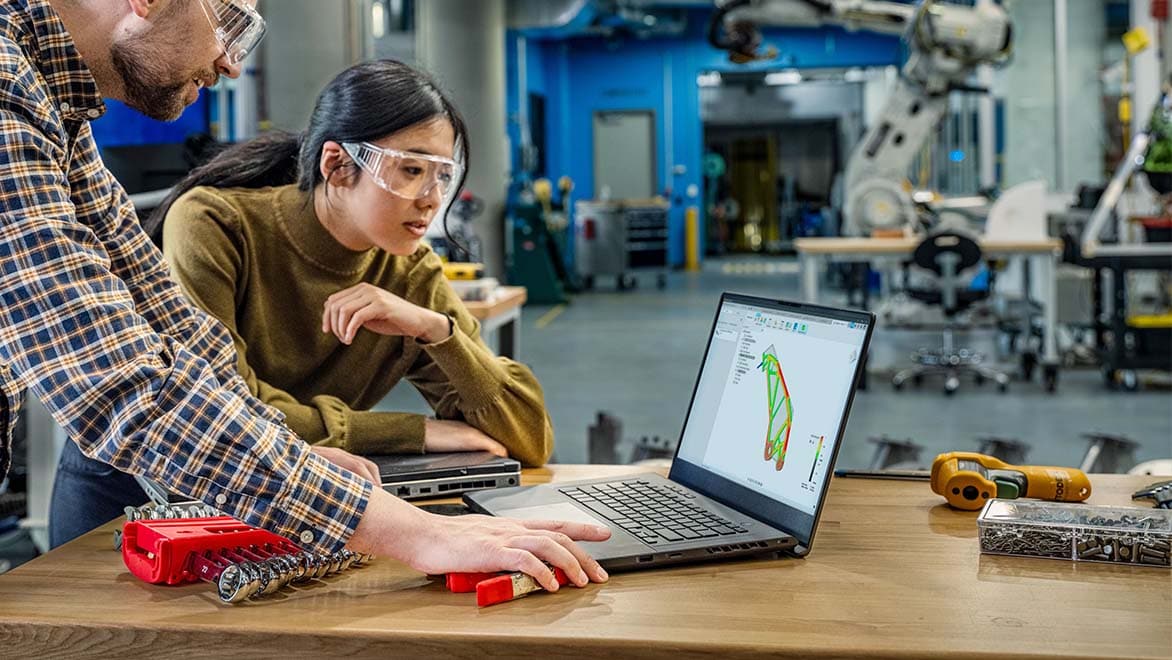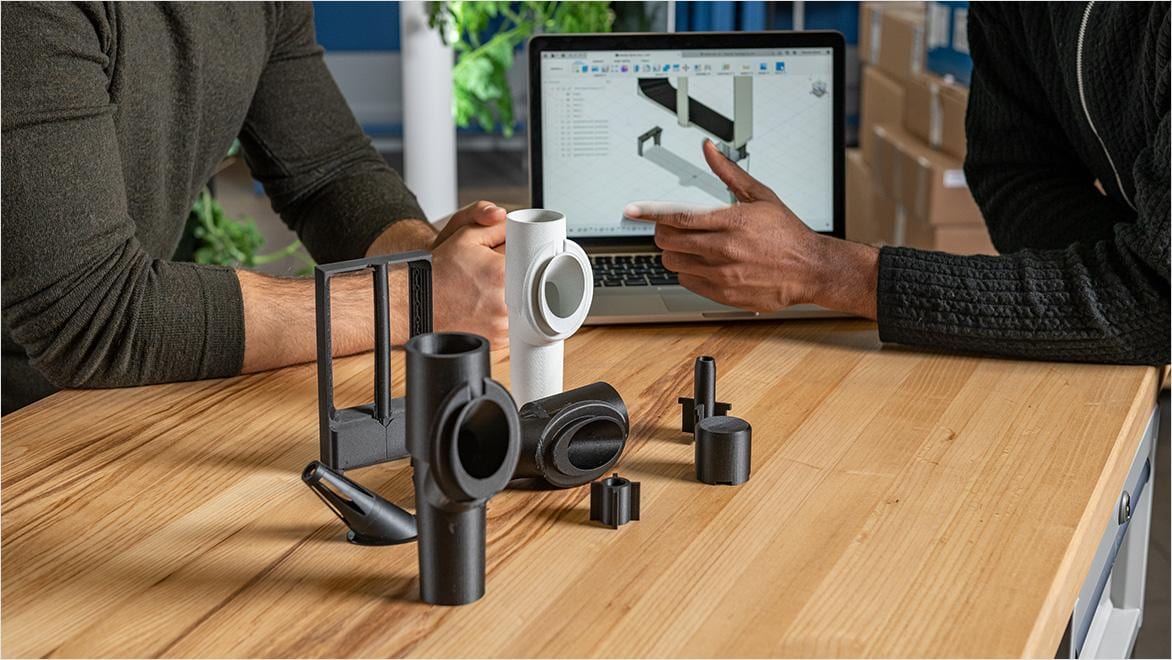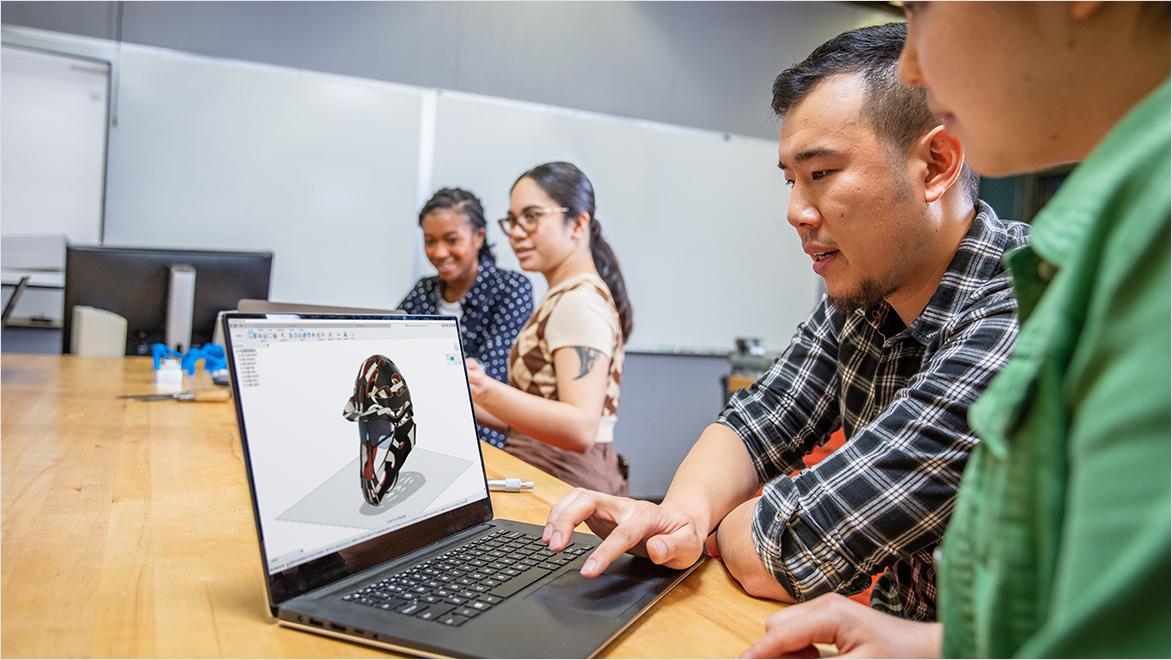& Construction

Integrated BIM tools, including Revit, AutoCAD, and Civil 3D
& Manufacturing

Professional CAD/CAM tools built on Inventor and AutoCAD
AI product design refers to the use of machine learning algorithms, generative design, and automation to enhance the design process. Traditionally, designers would sketch out ideas, create digital models, and go through countless iterations to refine their designs. Product design artificial intelligence can automate many parts of this process, not replacing human designers, but giving them powerful ways to explore their creativity and making them more efficient. For example, Generative AI can quickly create sketches and models based on the designer’s ideas, and create many different versions of them from which the best can be picked. Autodesk offers a variety of cutting-edge AI product design features in our Fusion 3D CAD/CAM software and in the Fusion Simulation Extension. You can get access to both of these, and other extensions that boost Fusion’s AI product design capabilities, in our Fusion for Design package.
AI has come a long way in transforming product design, starting from simple automations to the advanced generative design we see today. However, this didn’t happen overnight. The AI we use now is the result of decades of research and technological breakthroughs. To fully appreciate how AI is shaping modern product design, it’s important to understand its developmental stages.
In its early stages, product design artificial intelligence was primarily focused on automation—helping designers complete repetitive tasks efficiently. For example, simple rule-based systems could be programmed to assist in tasks like scaling models, applying standard dimensions, or generating 2D blueprints from 3D models. These systems followed strict logic, and while they sped up some aspects of design, they didn’t offer much in terms of creativity or flexibility.
The next big leap in AI for product design came with the introduction of machine learning. Unlike rule-based systems, which follow predefined instructions, machine learning algorithms could “learn” from data and make decisions based on identified patterns. This meant AI in product design could not only automate tasks but also get smarter over time. Machine learning could analyse past design projects to find trends or insights not obvious to human designers and suggest improvements based on factors like material efficiency, cost reduction, or user preferences. This level of intelligent assistance gave designers more room to focus on the creativity aspect while AI handled data-driven optimization.
Now, generative design (US Site) is the most advanced stage of AI in product design so far. Powered by AI and machine learning, it fundamentally changes how designers work. Instead of manually drawing and iterating designs based on past work, designers input their goals and let the product design artificial intelligence explore thousands of possible solutions. Autodesk has been a leader in this area with tools like Fusion. By setting goals and constraints, designers use AI product design software to generate many design options optimised for manufacturability, performance, and cost. They can then pick from these choices or tweak them further, creating a true partnership between human creativity and machine intelligence.
A growing number of AI product design features are integrated within Autodesk software like Fusion, Fusion for Design and the Fusion Simulation Extension. These features include:
Long before the current wave of generative AI, Autodesk was using the technology in Fusion to generate and optimise multiple designs simultaneously to help you identify the best possible product design.
Fusion’s CloudNC CAM Assist Automation (US Site) Add-in creates machining strategies from 3D models in moments, allowing you to quickly create prototypes and put products into production thanks to product design AI.
Cloud Solve is an AI product design feature within Fusion which allows you to automatically and simultaneously solve design outcomes in the cloud, while you focus on what’s important.
Optimise part design and performance with unlimited cloud solves for generative design, FEA, electronic cooling, injection moulding and more.
AI product design is quickly increasing in popularity because of the many benefits it offers, including:
Using AI for product design can not only save money in terms of labour hours, but it can also help you to identify the most cost-effective iteration of a design.
Rather than having to spend hours tweaking a design each time a change is requested, product design AI can provide designers with a number of new variations almost instantly, based on the parameters and constraints they set.
The enhanced efficiency of AI-based product design processes can dramatically reduce the amount of time taken to launch a product, allowing you to keep up with current trends and stay ahead of the competition.
Product designers can be freed up to use their creativity to imagine and develop exciting new products, rather than spending their time doing monotonous practical tasks.
One of the most significant developments in AI product design has been the ability to run detailed accurate digital simulations of how a product or part will behave in real-world conditions. Autodesk’s Fusion Simulation Extension allows you to run simulations in specific domains, like structural, thermal and injection moulding, so you can test how different iterations of your product design will behave. You can also get access to the Simulation Extension, Fusion itself, and the Fusion Design Extension, with our special Fusion for Design package.
Artificial intelligence (AI) is changing the way things are done in many industries, and product design is no exception. In recent years, the integration of AI—especially generative AI—into design and manufacturing has helped to streamline processes and unleash new levels of creativity. For product designers and manufacturers, AI-based product design represents an opportunity to become more productive, design more efficiently, and, ultimately, create better products.
But is AI in product design all good? Some people worry that relying too much on AI might take away the human touch. If a computer suggests designs, where does the designer's creativity fit in? On the flip side, AI tools can handle repetitive tasks and complex calculations, freeing up valuable time for designers to focus on big ideas and decision-making. The fact is, AI in product design does not replace the designer. It enhances their abilities.
The reality is that AI is a tool—like a more advanced pencil or laptop. When used wisely, it helps boost creativity and efficiency, leading to better outcomes. So, while there are concerns to consider, the benefits of AI in product design make it a valuable asset in the creative process.
As AI continues to evolve, it will likely offer even more advanced capabilities—predicting trends, adapting to real-time user preferences, and pushing the boundaries of what’s possible in product design and manufacturing. The more data AI has access to, the better it will become at understanding not just the technical aspects of design but also the human elements, such as consumers’ behaviour and emotional response to products.
At Autodesk, we’ve embraced AI to empower designers and manufacturers. Our tools, like Autodesk Fusion, make it easy to integrate AI into design workflows without needing to be AI experts. Let’s look at AI in Fusion.
Autodesk Fusion's generative design software and the Fusion for Design package is like having a team of designers at your fingertips. Instead of starting with one idea and tweaking it repeatedly, Fusion’s product design artificial intelligence tools consider real-world constraints like manufacturing methods and budget. This means designers aren’t just coming up with “cool” designs—they’re developing solutions that are practical to produce.
Fusion’s Simulation Extension allows you to test real-world conditions during the design process—whether it's stress testing, heat resistance, or impact analysis. For example, if you're designing a car part or an industrial machine, these simulations help ensure your product will perform as expected under extreme conditions, reducing the risk of failures and costly recalls.
Fusion uses AI to automate 2D documentation, streamlining the creation of manufacturing drawings. This automation generates precise, interactive 2D designs and reduces time spent on repetitive tasks. Learning from your workflow, Fusion adapts to produce detailed documentation faster, allowing you to focus on other critical aspects of product development.
Autodesk’s generative AI features within Fusion and other software solutions leverage the power of machine learning algorithms to create 3D designs based on the goals and constraints set by your designers. Our product design artificial intelligence can consider factors like cost and performance, materials used and structural integrity to optimise your product designs. AI can be your expert virtual collaborator throughout all stages of the design process.
Many industries already benefit from AI in product design. In aerospace, companies use AI for product design to create lighter, stronger parts that can withstand the extreme conditions of space. By optimising designs with AI, they reduce weight, improve fuel efficiency, and lower costs.
In consumer products, companies are using AI to design everything from furniture to household appliances. For instance, generative design can create ergonomic chairs that optimise comfort while minimising material use, or it can help electronics manufacturers design more energy-efficient appliances. Even in fashion, AI generated product design is playing a role. Clothing brands analyse trends and consumer preferences using AI, allowing them to design products that are not only stylish but also highly personalised for individual customers.
As AI continues to advance, its role in product design will only expand. We can expect deeper integration into the design process, enabling faster iterations and better design optimisations. AI will become a trusted partner for product designers, helping them navigate the complexities of modern manufacturing while maintaining focus on creativity and innovation.
For designers, this means staying ahead of the curve by embracing product design artificial intelligence today. Those who leverage AI in their workflows will be better equipped to meet the challenges of tomorrow's markets and create products that stand out in a crowded marketplace. At Autodesk, we are excited to be at the forefront of this revolution, providing designers with the tools they need to bring their ideas to life and shape the future of manufacturing.
Call 000-800-040-2543 (9:30 AM to 5:30 PM India local time) if you need our assistance.
Autodesk Fusion’s generative design course provides a foundational overview for designers looking to integrate AI into their workflow.
Watch videos and read case studies that demonstrate the real-world application of AI in product design and enhance creativity and efficiency in AEC using Autodesk Revit.
See the latest advancements in AI-driven design and get insights into how Autodesk AI is changing industries like AEC, manufacturing, and media.
AI in product design refers to the use of artificial intelligence tools to assist in various stages of the design process. It helps automate repetitive tasks, generate design options, predict product performance, and optimise designs based on pre-defined constraints.
Generative design uses AI algorithms to create multiple design variations based on specific inputs like material, weight, or cost. Designers set constraints, and AI generates designs to meet those requirements. Then, the designer can choose the best option.
AI in product design enables rapid design iterations and automates testing and simulations, which cuts down the time required to refine a product. This accelerates the entire development cycle, allowing companies to get their products to market more quickly.
AI product design software analyses designs and adjusts them to meet manufacturing constraints. It ensures that the product is easy to produce at scale, minimising material waste and reducing production costs.
Product designers don’t need to be AI experts. However, they should be familiar with AI product design software like Autodesk Fusion and have a basic understanding of how to input constraints and interpret AI-generated designs.
No, AI acts as a co-creator or assistant. It helps designers by generating ideas, but the final decisions and creative input come from the designer.
The simplest way to create a product using AI product design is to use well-established software solutions that have these capabilities built in, such as Autodesk Fusion. With Fusion you can specify your parameters and design requirements, and quickly generate multiple product versions to refine further.
AI product design can be used in many different elements of design to speed up the process and make it more efficient. It can be used to generate initial product designs based on your ideas, to refine new iterations of existing designs, to optimise certain features, and to create complex accurate simulations (US Site) that allow you to test you your product in the virtual world.
Generative AI can be used to gain inspiration for new product ideas based on your initial outline. You can also use generative AI in product design to create many different versions of the same product, so you can pick the best one based on what’s important to you. Generative AI can help further by optimising your designs for manufacture within your specified constraints and parameters.
